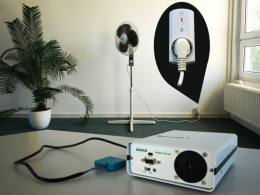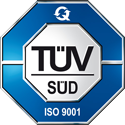Ventilation control to keep the legal radon reference value
An efficient and inexpensive measure for reducing the radon concentration in existing buildings is to purposefully vent the rooms. This can be done directly in the working and living rooms or through neighboured rooms (e.g. cellars) in order to prevent the radon from propagating in the building.
This is possible by means of both wall ventilators with heat exchangers on the room level or by central ventilation units.
The radon concentration in rooms will not rise suddenly and thus the requirements to the response time of the radon monitors used for the control are rather moderate. Hourly updates are quite enough but certainly the statistical uncertainty of the measured value should be low. Consequently, the sensitivity of the instruments should be accordingly high.
For the easiest case, a switching output for the ventilation control will be sufficient, for more complex systems the transfer of the measured concentration value will be of interest as well.
The instruments should operate maintenance-free and be easy to install. If installed in living spaces, the instruments should be small and have an attractive design. For observing the room air quality, additional sensors for temperature and humidity or the CO2 concentration are advantageous.
All these features are met by the instruments Radon Scout Professional or Smart Radon Sensor respectively.
Both instruments have the same sensors but differ in the interface to the user. The Radon Scout Professional has a display to indicate all parameters whilst the Smart Radon Sensor comes with an RS-485 MODBUS RTU interface in addition to the switching output that is provided with both instruments. This standard is used in all current systems of building automation.
As an option, the Smart Radon Sensor can be delivered with wireless connectivity.
Due to its high sensitivity, the Radon Scout is also ideally suited for direct control of ventilation systems, as well as our new Radon Scout Everywhere.

.png&h=195&w=260&zc=1)


